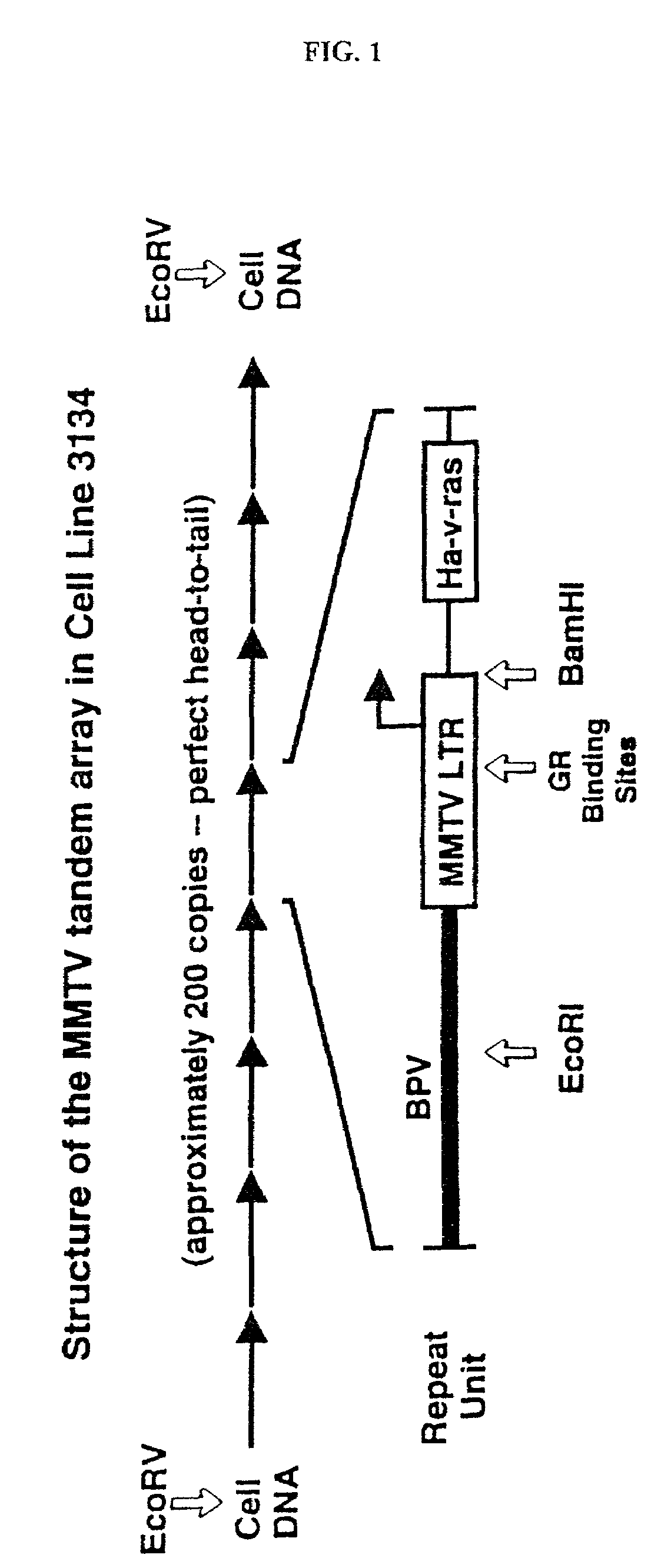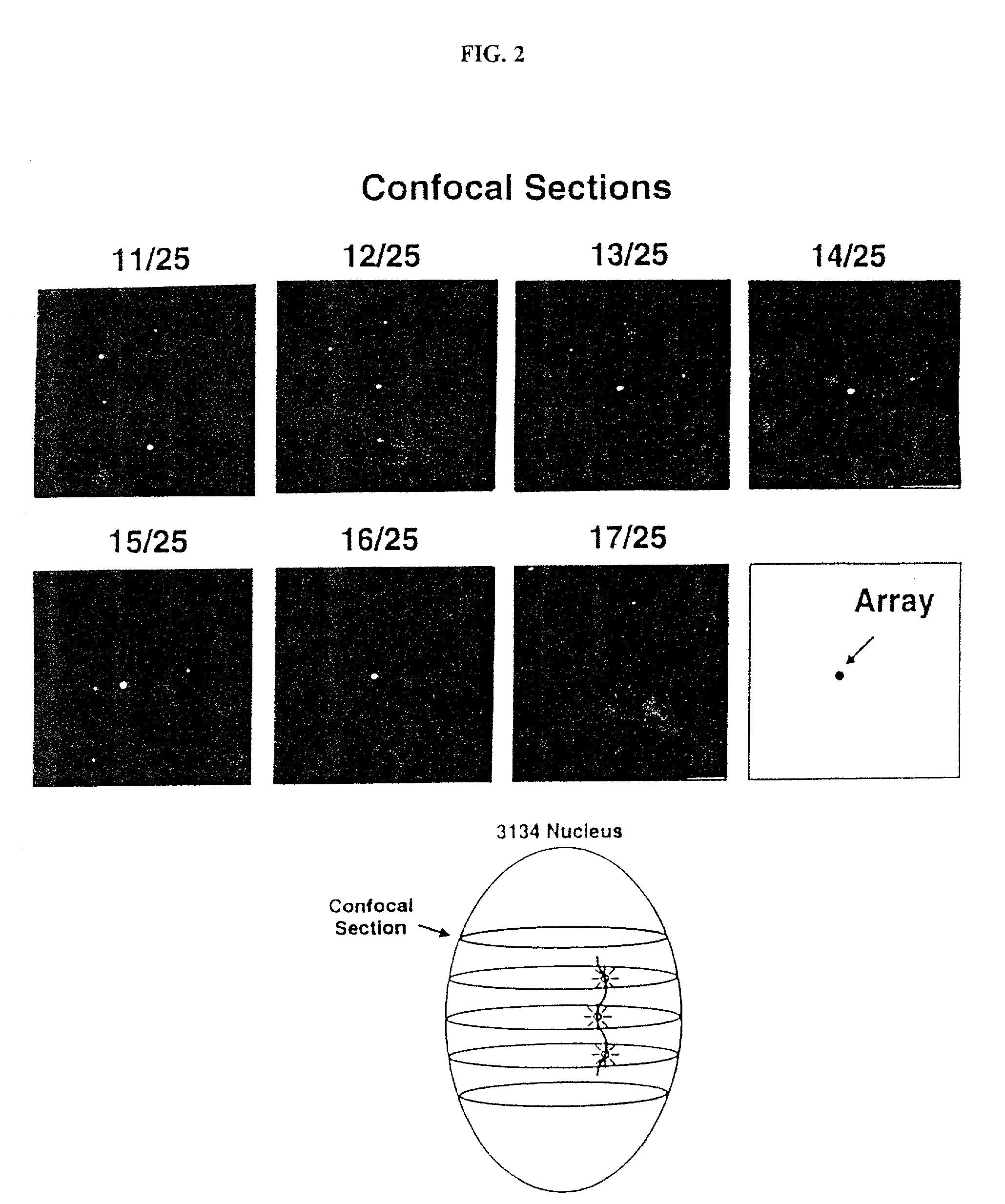Methods for screening ligands that activate the translocation of a steroid receptor to the nucleus in mammalian cells
- Summary
- Abstract
- Description
- Claims
- Application Information
AI Technical Summary
Benefits of technology
Problems solved by technology
Method used
Image
Examples
examples
[0113]The present invention is more particularly described in the following examples which are intended as illustrative only since numerous modifications and variations therein will be apparent to those skilled in the art.
Plasmids.
[0114]pCI-nGFP-C656G: Plasmid pCI-nGFP-C656G was derived from pCI-nH6HA-C656G (Smith et al., submitted) and pZA69 (a kind gift from Mike Moser and Ravi Dahr). pZA69 contains a BspHI fragment of pZA66, a plasmid containing S65T GFP (Tsien, R. Y. (1995) Nature 373,663-664) with the internal NcoI site removed by a silent mutation. The pCI-nH6HA-C656G DNA expresses the rat glucocorticoid receptor with the C656G mutation (kindly provided by S. Simons, Jr.) under the control of the CMV promoter / enhancer, and is tagged at the N-terminus with (his)6 and hemagglutinin epitope recognized by monoclonal antibody 12CA5 (Niman, H. L., Houghten, R. A., Walker, L. E., Reisfeld, R. A., Wilson, I. A., Hogle, J. M. & Lemer, R. A. (1983) Proc. Natl. Acad. Sci. U.S.A. 80, 4949...
PUM
| Property | Measurement | Unit |
|---|---|---|
| Fluorescence | aaaaa | aaaaa |
Abstract
Description
Claims
Application Information
 Login to View More
Login to View More - R&D
- Intellectual Property
- Life Sciences
- Materials
- Tech Scout
- Unparalleled Data Quality
- Higher Quality Content
- 60% Fewer Hallucinations
Browse by: Latest US Patents, China's latest patents, Technical Efficacy Thesaurus, Application Domain, Technology Topic, Popular Technical Reports.
© 2025 PatSnap. All rights reserved.Legal|Privacy policy|Modern Slavery Act Transparency Statement|Sitemap|About US| Contact US: help@patsnap.com



